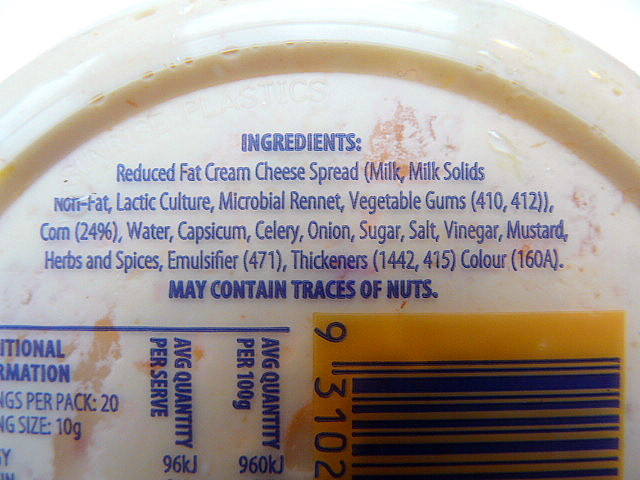Discover the Advantages of Making Use Of an Emulsifier in Food for Boosted Culinary Experiences
Emulsifiers are usually forgotten yet essential components in culinary practices. They help with the blending of diverse ingredients, enhancing both taste and texture. By ensuring security, emulsifiers stop the unpleasant splitting up of blends. Their convenience spans various applications, from sauces to dressings. Recognizing their function can lead to substantial enhancements in food quality and presentation. What specific advantages do emulsifiers supply that can change day-to-day dishes into amazing cooking experiences?
Comprehending Emulsifiers: What They Are and Just how They Function
Emulsifiers play a necessary function in the food sector, functioning as representatives that assist in the mixing of water and oil, 2 materials that commonly do not blend. These compounds possess both hydrophilic (water-attracting) and hydrophobic (oil-attracting) properties, allowing them to maintain mixtures by minimizing the surface stress in between the two phases. Typical emulsifiers include lecithin, mono- and diglycerides, and specific proteins.
When included to food products, emulsifiers produce a secure solution, stopping separation and making certain a consistent structure - Emulsifier In Food. They are crucial in several applications, varying from salad dressings and mayonnaise to gelato and sauces. By keeping the integrity of mixes, emulsifiers not only enhance the aesthetic charm of food however also enhance mouthfeel and uniformity. Their ability to support solutions makes them indispensable in modern food formulation, adding greatly to the top quality and life span of different items
The Role of Emulsifiers in Flavor Improvement
While frequently overlooked, emulsifiers considerably add to taste enhancement in food products. They play a necessary role in boosting the total taste experience by guaranteeing that taste substances are equally distributed throughout a dish. By supporting emulsions, such as sauces or dressings, emulsifiers avoid the splitting up of oil and water, permitting flavors to meld together more effectively. This uniform distribution not only intensifies the taste but also ensures that each bite is constantly tasty.
In addition, emulsifiers can boost the assumption of particular flavors, making them more noticable on the palate. They may interact with specific components, helping to release unstable taste substances that add to a recipe's aromatic profile. The usage of emulsifiers can substantially elevate the culinary experience, changing straightforward dishes into facility and wonderful taste journeys. Their subtle yet impactful duty in flavor enhancement should not be underestimated in the art of cooking.
Emulsifiers and Texture: Creating Creamy and Velvety Cuisines
The effect of emulsifiers prolongs beyond taste enhancement to the domain name of structure, where they are critical in developing silky and luscious dishes. By assisting in the uniform circulation of fats and water, emulsifiers enable the development of stable solutions, resulting in an elegant mouthfeel. This is specifically noticeable in products like mayonnaise, sauces, and dressings, where a smooth, creamy consistency is preferred.
Emulsifiers such as lecithin and mono- and diglycerides function Clicking Here to minimize surface stress between active ingredients, enabling an unified mix that boosts the additional hints sensory experience. The luscious structure accomplished via emulsification can raise recipes, making them much more attractive and pleasurable. Furthermore, the capability to produce a silky appearance allows cooks to incorporate numerous components without compromising consistency, bring about innovative cooking creations. Basically, emulsifiers play a necessary function in changing ordinary dishes right into remarkable culinary experiences through texture improvement.
Stability Issues: Exactly How Emulsifiers Prevent Separation
A crucial facet of cooking emulsifiers is their ability to avoid splitting up, ensuring that items maintain their designated texture and look with time. Emulsifiers operate by maintaining blends of oil and water, which naturally often tend to divide because of distinctions in thickness and polarity. By lowering surface area stress at the oil-water user interface, emulsifiers help with the formation of stable emulsions, enabling an uniform distribution of ingredients.

Common Emulsifiers in Cooking and Their Applications
Comprehending the various emulsifiers generally used in food preparation exposes their significant roles in boosting food structure and stability. Lecithin, acquired from egg yolks or soybeans, is commonly used in mayo and salad dressings, supplying a creamy consistency. Mustard, likewise an emulsifier, help in stabilizing vinaigrettes while conveying flavor.


An additional preferred emulsifier is xanthan gum, often used in gluten-free baking and sauces for its thickening residential properties. Guar periodontal offers a look at this web-site comparable function, improving the structure of gelato and dairy products.
Mono- and diglycerides, frequently found in processed foods, help improve service life and maintain texture. Casein, a milk protein, is used in cheese-making and creamy sauces, adding to a smooth mouthfeel. Each of these emulsifiers plays an important function in cooking applications, making sure desirable textures and preventing splitting up in diverse foodstuff.
Often Asked Questions
Are Emulsifiers Safe for Individuals With Food Allergies?
Emulsifiers can be safe for people with food allergic reactions, depending on the specific emulsifier made use of. It is necessary to determine the resource of the emulsifier, as some might set off allergies in delicate individuals.
How Do Emulsifiers Influence the Nutritional Content of Food?
Emulsifiers can affect the nutritional web content of food by boosting nutrient absorption and boosting texture. Nonetheless, their existence might likewise thin down particular nutrients, depending upon the food matrix, possibly modifying overall nutritional worth.
Can Emulsifiers Be Made Use Of in Vegan Food Preparation?
Emulsifiers can be efficiently used in vegan cooking, giving appearance and security to meals. Plant-based emulsifiers like lecithin, originated from soy or sunflower, aid mix ingredients, improving the general high quality of vegan cooking creations.
What Are the Ecological Impacts of Emulsifier Production?
The ecological effects of emulsifier manufacturing typically consist of deforestation, water contamination, and high power intake. Additionally, some resources of emulsifiers can contribute to biodiversity loss, increasing problems concerning sustainability in food manufacturing practices.
Exactly How Do Emulsifiers Compare to All-natural Thickeners in Food Preparation?
Emulsifiers offer smoother structures and enhanced security contrasted to natural thickeners, which can present distinct flavors - Emulsifier In Food. While emulsifiers improve mouthfeel and appearance, all-natural thickeners give more wellness advantages and can add to the dish's flavor account
When included to food products, emulsifiers produce a steady emulsion, avoiding separation and guaranteeing an uniform appearance. While often overlooked, emulsifiers considerably add to flavor enhancement in food items. Recognizing the different emulsifiers generally utilized in cooking reveals their substantial functions in enhancing food structure and stability. Emulsifiers can be safe for people with food allergies, depending on the specific emulsifier made use of. Emulsifiers can influence the dietary material of food by enhancing nutrition absorption and enhancing texture.